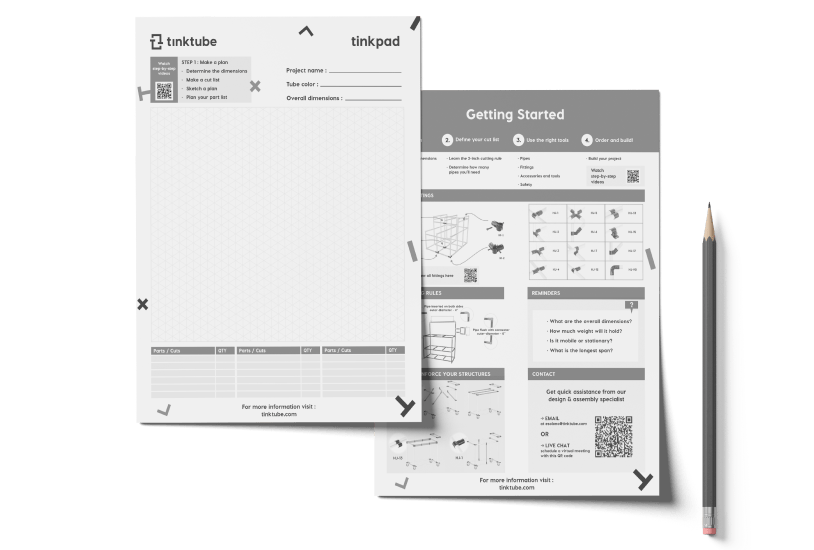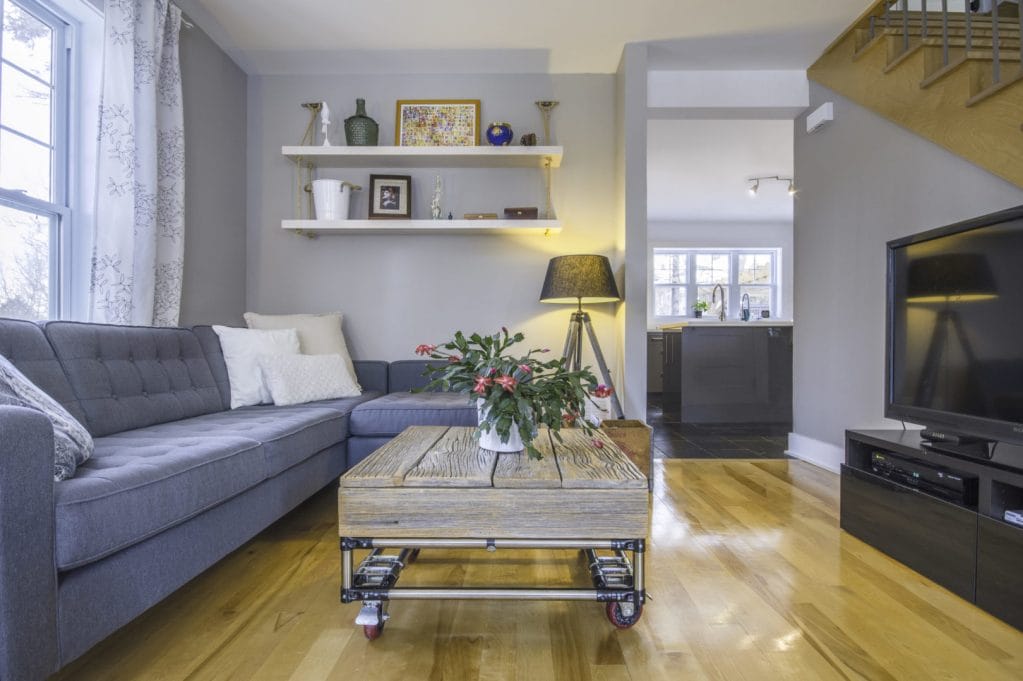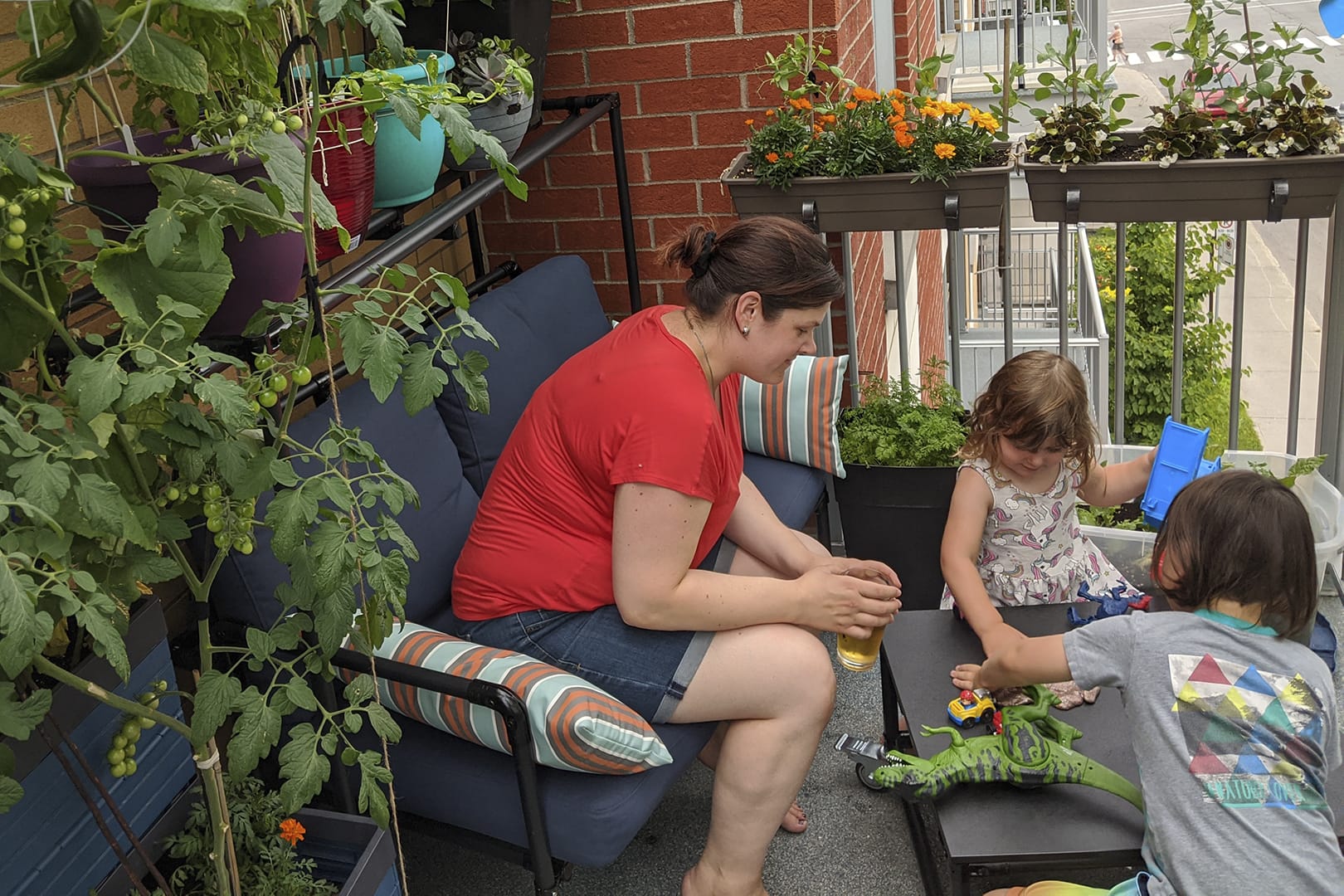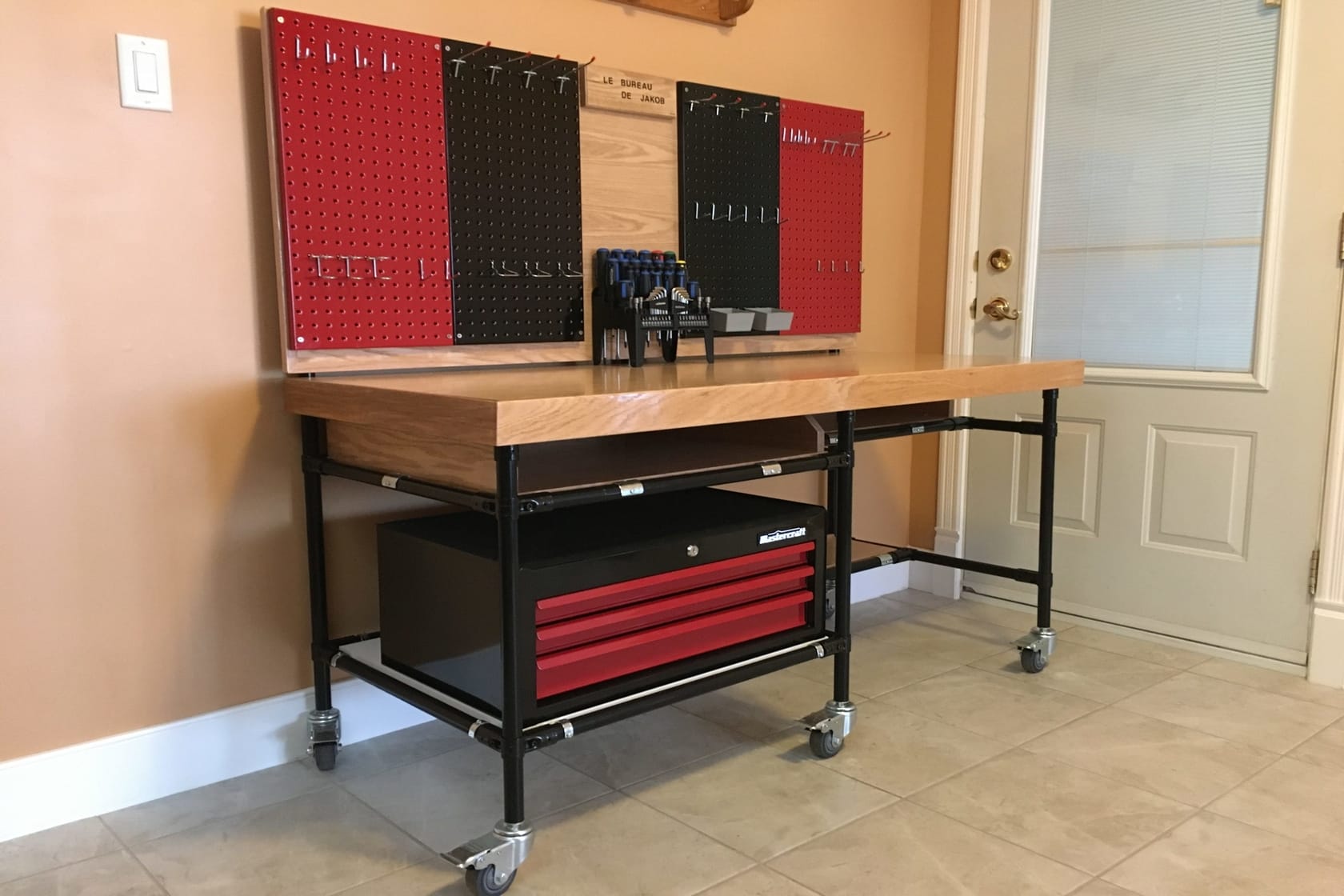Tubetinkers, this story began when a lovely family decided to move into a new house!

Moving is a lot of work, especially when you’ve got two kids and a lot of stuff (probably too much stuff, if we’re being real).

With careful planning, they managed to get all the boxes ready for moving day. A few days of a very-well-organized-but-crazy-unpacking-marathon later, the new house started to look like a normal living environment.
Happy about their work, Julien and his wife Miriam decided they deserved a break. They made their way to the living room with a coffee, to discuss the next steps. All the furniture was pretty much in place and everything looked great, but somehow, something seemed to be missing…
Reflecting on the missing puzzle piece, Julien went on to put his cup of joe on the coffee table and that’s when he realized: there was no coffee table to be found in their new living room.
Building your own coffee table: where to start
Adapt this project with the tinkpad!
Draw your project with this free printable tool which includes an isometric grid and our best tips to get started.

Building your own coffee table: where to start

Big fan of industrial home design, DIY projects and upcycling ideas, Julien saw this as the perfect opportunity to build his own coffee table using pipes and fittings. So the quest began.
He started looking for the best way to create a coffee table that would be simple, unique and easily adaptable. Julien wanted a steady, high-quality DIY coffee table with a minimalist design, that could fit the exact space available in their new living room.
Miriam wanted a rolling coffee table, so it could be moved around easily if needed -for cleaning and vacuuming, to be used as an ottoman…-. She was also a big fan of rustic style furniture, for the warm and cozy atmosphere it could bring to a room!
The kids wanted chocolate.
The “making of” Julien’s DIY coffee table
Once his basic plan was drafted, our tinktuber measured the space available in the living room and determined the best dimensions for his table. The height had to be adapted too: he wanted the kids to easily access whatever was on it.
Since space management -storage space especially- was always an important matter for Julien’s family, he thought about building the table with a compartment to place magazines, remotes… and probably some toys, too.
He found an old barn wood table which he upcycled by salvaging the top, which he could then fix to the pipe legs. Since the table had been stored in an old, dusty garage for quite a while, the first thing to do was to wash it and get rid of any bacteria that might still be present on the surface.

He used a pressure hose to get rid of the particles encrusted in the wood (if you don’t have a pressure hose, a wire metal brush and a regular hose could work just as well).
He used a flat matte polyurethane sealer -here are some examples you can easily buy online- to protect the wood from water or spilled coffee. Anyone looking for natural or organic options can oil and wax the surface with mineral or linseed oil and beeswax using this method, which he found on a blog about renovation and home improvements.
Creating the pipe structure for the legs
Julien first created a plan for the structure. He planned out the dimensions of the table, the number of tubes he was going to use and the types of connectors he would need.
He cut the pipes using the T-Cutter (link to website?) and used the hand deburring (link) tool to remove burrs from the metal pipes. He then fixed the pipes together with HJ-2 and HJ-1 connectors and added the wheels! He chose swivel wheels with brakes (link W-4PSB), which made the structure more secure for the kids if needed. Of course, he also used nuts (link M6-N) and bolts (link M6-25B) to fasten the structure. Drilling metal screws (F-A85/8) were also used on the corners to make the whole table much stronger!

When he fastened the bolts and nuts, he made sure to see at least 2 threads of bolt through the nut to ensure stability. If you use a drill, the proper torque would be 12 – 14Nm torque.
He then used AO-EMT1 (link) as connectors to fix the pipe structure to the tabletop, and the trick was done!

He didn’t need to use many tools: in fact, the only thing he used was an Allen wrench, an impact drill driver and a screwdriver to connect the tabletop to the frame. The tools he used for the tabletop was a palm sander and a table saw or circular saw.

Building your own coffee table: how much time will you need?
Overall, it took Julien between 4 and 5 hours of work to do the whole project, including the sketching of his plan, the search for a tabletop, the preparation, and even the picking up afterwards.
This amount of time will vary depending on your knowledge of the pipe and connectors products and the complexity of your project, of course. Overall, our tinktuber said it was very easy to put together and the result is great! The coffee table is very stable thanks to the pipe frame, and the casters make it easy to move around. The style fits what he wanted and the dimensions are perfect!
Julien’s piece of advice:
-Look for the tabletop first and then think about the base of the table: it’s easier to adapt the frame to the top than the other way around!
-Use natural products like linseed oil if you can to prepare the wood part, especially if you have kids.
-Julien’s coffee table was made out of a porous type of barn wood, which also had a lot of texture in it. When your kids decide to put their food on the table or to use it as a “plasticine creation” stand, it will be hard to remove the particles that tend to get stuck on the surface. Our tubetinker suggests using a smoother type of wood or sanding the top, to equalize the surface.
-Make sure you lock the casters, especially if you have kids who are learning to walk… unless you want to use it as a walking stand 🙂
-tinktube casters can leave marks on the floor if the table is moved quite often. Might be a good idea to shop around for more “floor friendly” options.
If you’re looking to build a similar DIY project, you might be inspired by these other “build your own” coffee table ideas (lien vers autre page), which combine industrial home design and upcycle projects!


